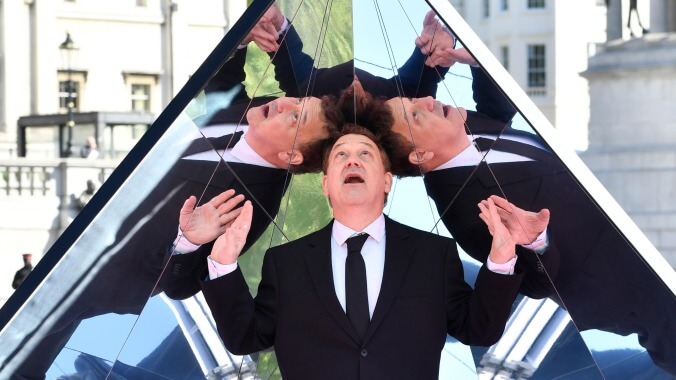Sam Raimi says he didn't have Doctor Strange 2's ending until more than halfway through filming
In a Rolling Stone interview, Raimi also discusses the pressures of making a movie that's essentially a sequel to three different recent Marvel projects at once

Prior to signing on to take over Doctor Strange In The Multiverse Of Madness, Sam Raimi hadn’t made a movie in 9 years—and hadn’t put his hand to a superhero film, the genre he helped establish as the modern blockbuster, in 15. It is, thus, fairly enlightening to hear Raimi talk frankly about the industry, and the challenges of settling in to the Marvel machine, which he did in a new in-depth interview today with Rolling Stone’s Brian Hiatt.
Raimi is unsurprisingly charming and humble throughout, but from a Marvel watcher’s point of view, the most interesting material in the profile probably comes early on—when the Evil Dead director confirms that, yes, his tenure on Multiverse (which began shortly after original Doctor Strange director Scott Derrickson left the film over reported “creative differences” with Marvel) really was the desperate game of catch-up that it seemed like it might be, with screenwriter Michael Waldron racing to finish the movie’s script just days ahead of Raimi’s shooting schedule.
“I think the hardest part was the time deadlines,” Raimi says while talking up the challenges on the film. “Not having the story or the script [ready] … being halfway into it and not knowing what the ending was. Michael’s trying to stay a couple days ahead of us with the next page coming out of his computer printer, and it’s hard because you want to make sure that everything is supporting the whole—that the themes are running through the picture. But when you don’t quite know everything about the picture, it’s hard to do that job as effectively as possible.”
(Among other things, Raimi notes that the film’s tight timetable meant he was sometimes forced to settle for less ambitious shots than he might normally have gone with. “What I should be doing with every shot and every moment, thinking ‘What’s the best technique?’ Not simply ‘We’ve got to make the schedule, put it on a crane. I know it can work from there. It may not be the absolute best choice, but we’ve got to keep momentum going for this unit, because I’ve got to get off this stage by five o’clock today, and they’re going to tear it down.’”)





![Rob Reiner's son booked for murder amid homicide investigation [Updated]](https://img.pastemagazine.com/wp-content/avuploads/2025/12/15131025/MixCollage-15-Dec-2025-01-10-PM-9121.jpg)





















![HBO teases new Euphoria, Larry David, and much more in 2026 sizzle reel [Updated]](https://img.pastemagazine.com/wp-content/avuploads/2025/12/12100344/MixCollage-12-Dec-2025-09-56-AM-9137.jpg)












